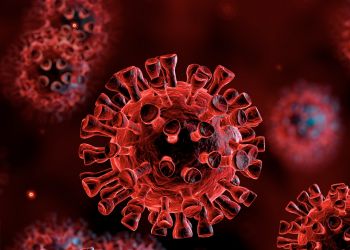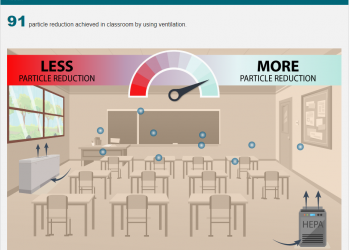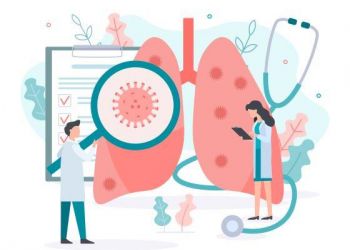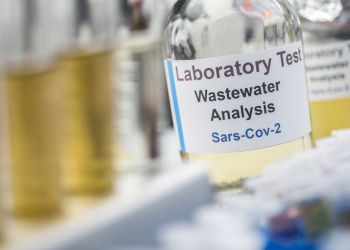Importance of Indoor Air Quality
COVID-19 is more easily spread in indoor spaces than outdoor spaces, and a growing body of evidence indicates that high-efficiency filtration systems and good ventilation practices can significantly reduce the risk of spreading the virus from person-to-person. Beyond the COVID-19 pandemic, improved indoor air quality has many other benefits. It can reduce the risk of other diseases such as Legionnaire’s disease, and can reduce the frequency of symptoms of common chronic respiratory conditions, such as asthma. In addition, improved air quality may simply make people feel more comfortable and contribute to an overall sense of wellbeing in homes, workplaces, and other indoor settings.
Children may be particularly susceptible to the deleterious effects of poor indoor air quality as they breathe more air relative to their body weight than adults. Indoor air quality controls can help contribute to better health outcomes in schools, day cares, and other early child care settings, and contribute to an overall sense of comfort and ease for students, children, and teachers and other adults alike.
NACCHO’s archived Environmental Health and COVID-19 resource library contains several resources related to indoor environments. A sample of these resources are listed below. Local Health Departments (LHDs) can access all of these resources for free. Most of these resources can be used both for COVID-19 prevention efforts as well as indoor air quality improvement efforts more generally.
Reducing Sources of Indoor Air Pollution
Reducing sources of indoor air pollution often means using safer products in indoor spaces. Some cleaning and disinfecting products can contain chemicals that may irritate the nose, throat, or lungs when inhaled (as well as irritate the skin or eyes upon contact). In addition, certain household products can emit volatile organic compounds. Even common products, such as bleach, can become a source of respiratory irritation, particularly if not used properly or used too frequently. Minimizing the use of potentially dangerous or irritating products is a simple way to improve indoor air quality.
Using well-regulated products and always following manufacturer instructions can help reduce unexpected sources of indoor air pollution as well. Searchable databases of products that have been reviewed or approved for specific uses by federal or state agencies can help guide consumers toward safer options for cleaning and disinfection.
The second resource listed under this section is specifically designed for young children and can be shared with daycares or other early childhood education settings.
- As part of the Clean Away COVID public service campaign, LHDs can download and share resources on safer cleaning practices. Certain disinfectants can cause nose or throat irritation, especially for vulnerable populations. Less harsh alternatives can be just as effective at reducing the risk of virus transmission while also reducing potential sources of indoor air pollution. Videos and fliers on safer cleaning practices, such as handwashing and surface disinfection, are available in English as well as Spanish. These resources can be used to support efforts beyond the COVID-19 pandemic, including during flu season.
- Clean Away COVID. Source: Clean Away COVID.
- These comics help children learn about safer indoor air practices and give them ideas for how to get involved in keep the air around them safe and healthy for all. There is one series with a focus on COVID-19, and one with a focus on environmental health more generally. These are available in English as well as Spanish, Chinese (simplified), Amharic, Vietnamese, Somali, Russian, Korean, and Portuguese (Brazilian).
- Cleaning and Safer Disinfecting Comic Strips for Families. Source: Pediatric Environmental Health Specialty Units.
- Cleaning and Safer Disinfecting Comic Strips for Families. Source: Pediatric Environmental Health Specialty Units.
- This fact sheet contains a section on how to use the Environmental Protection Agency’s (EPA’s) disinfectants list to identify products that can both help protect against COVID-19 transmission and that can reduce the risk of indoor air pollution. Specifically, it explains the EPA List N, which is a searchable list of disinfectant products that meet EPA’s criteria for use against the virus that causes COVID-19, as well as the EPA Design for the Environment (DfE) Antimicrobial Product Program’s list of disinfection products that use active and inactive ingredients which have been reviewed for their known effects on human health. From the EPA website: “DfE-certified products exclude ingredients that might pose long-term health risks, such as potential to cause cancer or negatively impact young children, among many others.”
The factsheet also provides screenshots to help users optimize the search features across both lists and identify products that are both effective against COVID-19 and safer for overall human health.- www.pehsu.net/_Library/_documents/Safer_Disinfectants_Fact_Sheet_English.pdf. Source: Pediatric Environmental Health Specialty Units.
- As part of this NACCHO webinar, LHDs can learn about an intervention at a local early childhood education program in California, efforts to protect children’s health among concurrent disasters in Puerto Rico, and practices to safely maintain and reopen buildings in North Carolina. Specific to indoor air quality, the first presentation details findings that suggest cutting back on the use of bleach in the classroom, among other activities, helped reduce respiratory symptoms and contributed to a better environment for children and caretakers alike.
- o Protecting Children’s Environmental Health During COVID-19 (Webinar Recording | Presentation Slides). Source: NACCHO.
Ventilation
Ventilation systems bring new air into the indoor space and help to circulate it around. In addition to potentially reducing the buildup of COVID-19 virus particles, these systems can also help reduce the buildup of other common indoor air pollutants and can help reduce concentrations of carbon dioxide. Heating, ventilation, and air conditions systems (HVAC) are used in many residential and occupational settings, and improvements or upgrades to these systems can improve indoor air quality. While not all HVAC systems can be upgraded, and not all indoor spaces will have HVAC systems, there are a number of other strategies that can be used to improve ventilation more generally, including opening the window or using a fan.
- The CDC Ventilation in Buildings page provides a comprehensive overview of ventilation considerations with a focus on strategies to reduce the risk of COVID-19. Drawing on guidance from ASHRAE, this webpage provides a list of strategies that can improve ventilation, and also provides a sample cost breakdown for different interventions. This page also includes a detailed FAQ section that provides sample scenarios and calculations to demonstrate the effectiveness of different ventilation strategies. Some of these FAQs also share information about filtration technologies, such as HEPA filters, and air quality monitoring devices, such as carbon dioxide monitors. Building managers and others responsible for HVAC operations may find this page useful, however, some information may be too technical for a general audience.
- The CDC Interactive Ventilation Tool allows users to input a few different variables to help them understand which factors will make a difference in terms of indoor virus particle reduction as part of COVID-19 prevention efforts. The variables include: using a HEPA filter, running the HVAC system (where available), and opening accessible windows. Users can see the estimated virus particle reduction at both the end of a sample 4 hour visit from a guest and 1 hour after the visit ends. The tool also allows users to toggle the different variables to better understand how they can reduce their risk of COVID-19 transmission in an indoor environment.
- Interactive Home Ventilation Tool. Source: CDC
- Interactive School Ventilation Tool *New*. Source: CDC

Filtration
Filtration systems help remove particles from the air. MERV-13 filters have been found to reduce the circulation of COVID-19 particles when compared to lower efficiency filters. While not all systems are equipped to handle a MERV-13 filter, and higher efficiency filters can cost more to operate, when available high-efficiency filters can be an effective tool for reducing the risk of COVID-19 transmission and improving indoor air quality overall. Portable air cleaning devices may also be an option in some spaces. Filtration alone is not sufficient to ensure good indoor air quality, but it can be used as part of a comprehensive strategy along with source control and ventilation.
- The EPA’s Air Cleaners, HVAC Filters, and Coronavirus (COVID-19) webpage details the role of filtration systems and technologies in COVID-19 prevention efforts. There is a section for air cleaners used in homes, and a sidebar providing guidance on selecting a portable air filter. In addition, there is a section specific to schools, offices, and commercial buildings. This page also provides some warnings and considerations about bipolar ionization technology as well as do-it-yourself air filtration setups.





